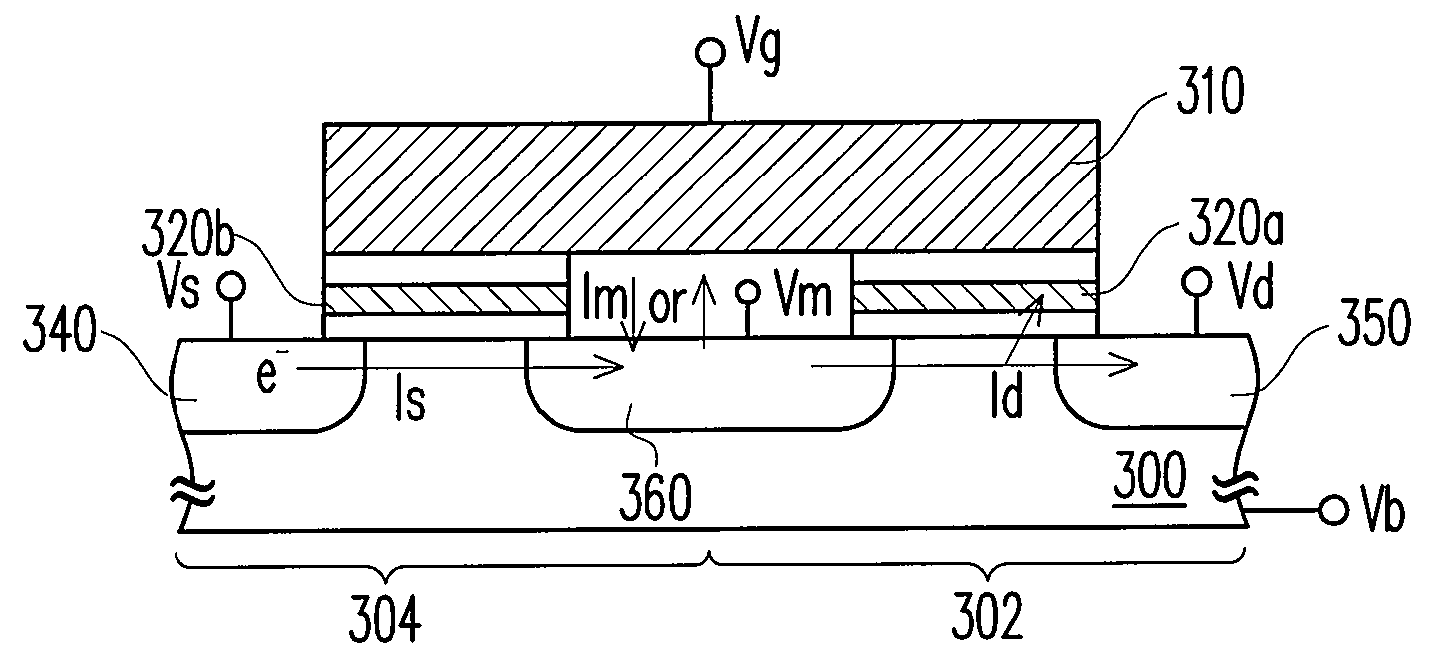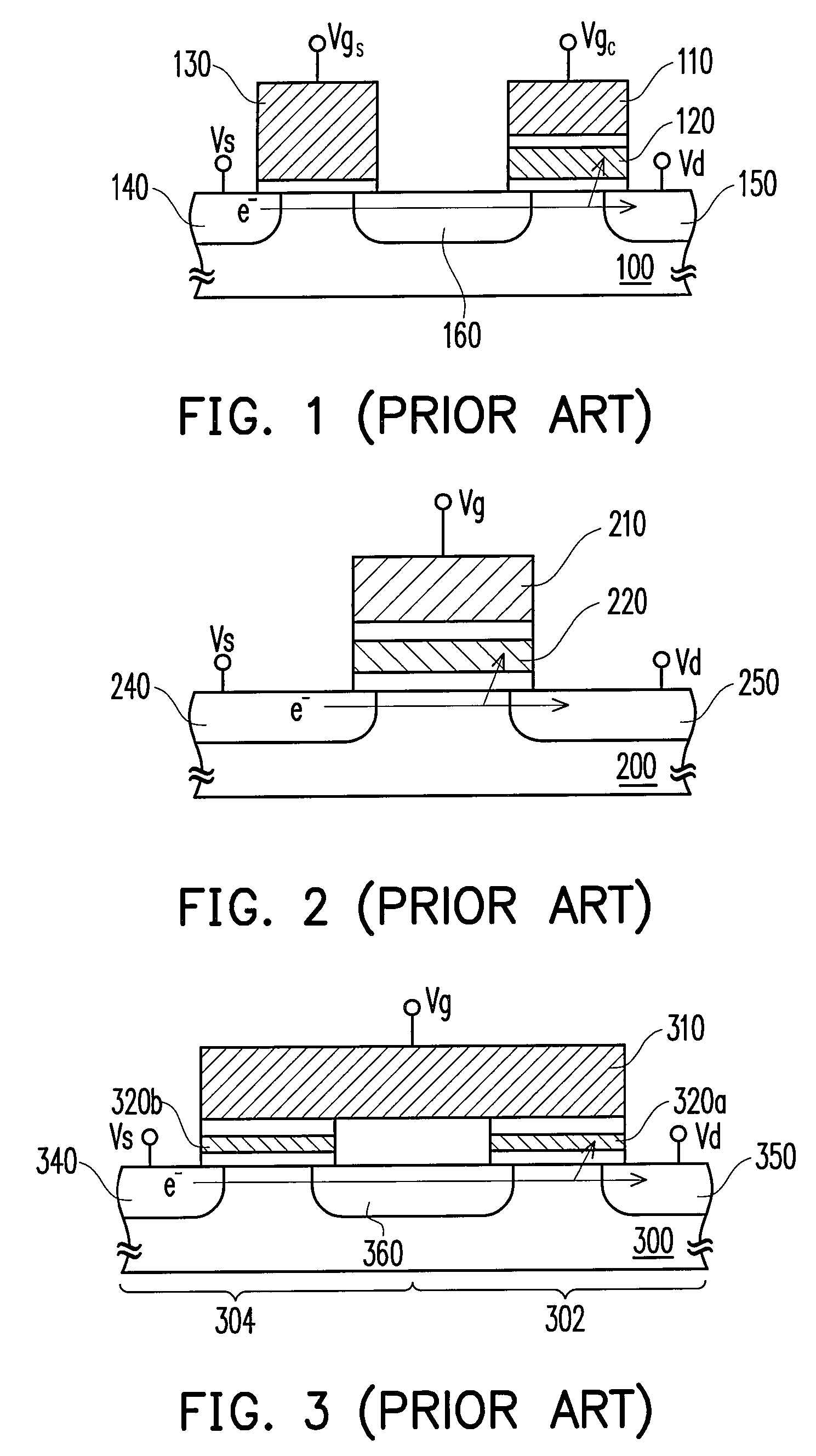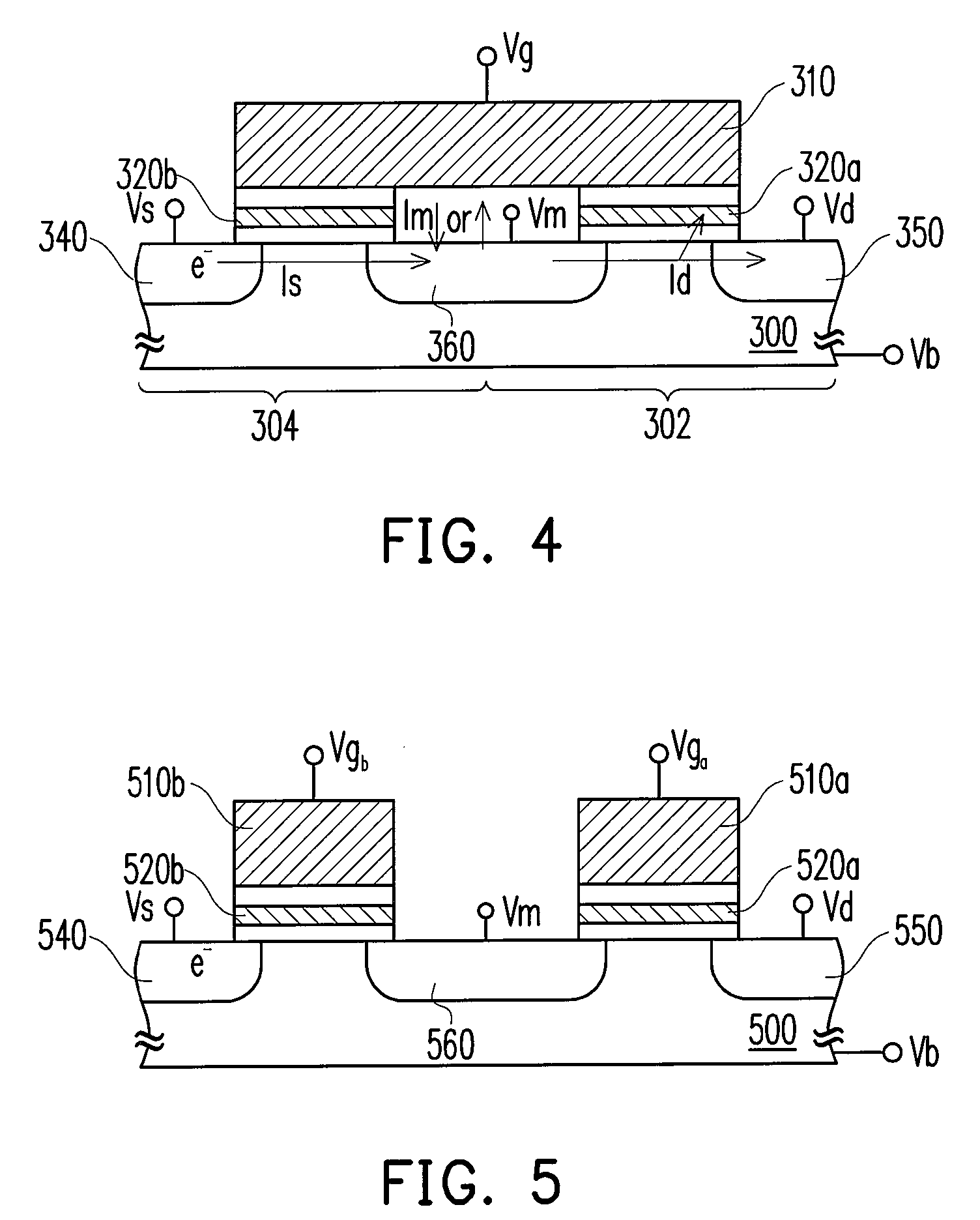Method of programming cell in memory and memory apparatus utilizing the method
a programming cell and memory technology, applied in the field of memory device operation, can solve the problems of reduced programming efficiency, easy punch-through issue of unselected cells coupled to bit lines coupled to programmed cells, and reduced programming efficiency, so as to improve the efficiency of hot carrier injection and accelerate more efficiently
- Summary
- Abstract
- Description
- Claims
- Application Information
AI Technical Summary
Benefits of technology
Problems solved by technology
Method used
Image
Examples
first embodiment
[0033]FIG. 4 illustrates a method of programming a cell in a non-volatile memory according to this invention.
[0034]Referring to FIG. 4, in the non-volatile memory, a cell 302 has a charge storage layer 320a and an N-type S / D region 350 in the substrate 300 and shares an N-type S / D region 360 with a neighboring cell 304, which has a charge storage layer 320b and an N-type S / D region 340 opposite to the S / D region 360. The control gates 310 of the cells 302 and 304 are contiguous and may be two portions of a word line. The storage layers 320a and 320b may be floating gates or charge trapping layers. As the storage layers 320a and 320b are floating gates, they can be separated from the control gates 310 by an ONO composite layer. When the charge storage layers 320a and 320b are charge trapping layers, they may include silicon nitride (SiN).
[0035]In this embodiment, the programming of the cell 302 is exemplified. A voltage Vb (0V or a negative voltage like −1V) is applied to the substra...
second embodiment
[0036]FIG. 5 illustrates a method of programming a cell in a non-volatile memory according to this invention.
[0037]Referring to FIG. 5, in the non-volatile memory, a first cell has a charge storage layer 520a and an N-type S / D region 550 in the substrate 500 and shares an N-type S / D region 560 with a neighboring second cell that has a storage layer 520b and an N-type S / D region 540 opposite to the S / D region 560. The two control gates 510a and 510b of the first and the second cell are separated from each other, wherein each of the two control gates 510a and 510b may be a portion of a word line. The storage layers 520a and 520b may be floating gates or charge trapping layers as in the first embodiment.
[0038]In this embodiment, the programming of the first cell is taken as an example. The programming process is similar to that described in the first embodiment except that two positive gate voltages Vga and Vgb are respectively applied to the control gates 510a and 510b to turn on the ...
PUM
 Login to View More
Login to View More Abstract
Description
Claims
Application Information
 Login to View More
Login to View More - R&D
- Intellectual Property
- Life Sciences
- Materials
- Tech Scout
- Unparalleled Data Quality
- Higher Quality Content
- 60% Fewer Hallucinations
Browse by: Latest US Patents, China's latest patents, Technical Efficacy Thesaurus, Application Domain, Technology Topic, Popular Technical Reports.
© 2025 PatSnap. All rights reserved.Legal|Privacy policy|Modern Slavery Act Transparency Statement|Sitemap|About US| Contact US: help@patsnap.com



